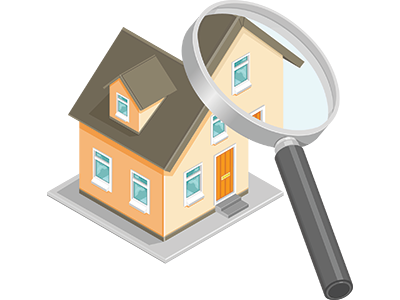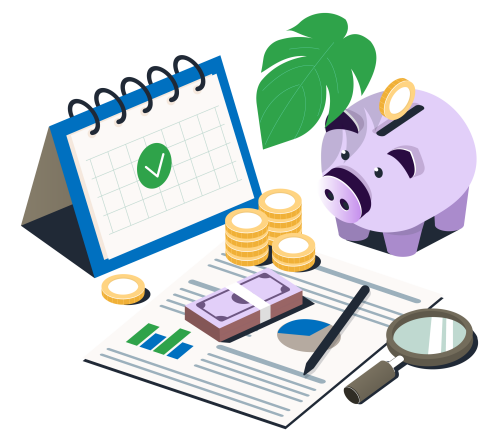Buy to Let Advice
- Most Buy to Let mortgages require a higher deposit of 25% which means lower mortgage repayments, which are often interest-only.
- Normally the minimum rent required from tenants is 125% of monthly mortgage repayments.
- Fixing your mortgage rate can hedge against uncertainty, but we expect the base rate to fall through to 2026, so a variable rate may be preferrable.
- Compared to residential mortgages, Buy-to-Let mortgages are less protected from repossession if you default on your repayments.
- Consider buying more properties rather than concentrating on one.
- Be aware of rental cover requirements; rent cover insures your income in the event your tenants have to move out after an uninsured event like fire and flood.
Whether you are a veteran in the Buy to Let market or hoping to become a landlord for the first time, this article provides the best advice to buy to let landlords and includes your legal responsibilities and the most recent changes. If you are looking for the most tax efficient way to buy a buy-to-let, read our guide on Buying Property Through a Limited Company
Should I buy a Buy to Let?
Buying an investment property is a big decision and depends on many factors, not least of all, can you afford it? When budgeting, you'll need to consider mortgage rates; agency finder feed and management fees (unless you plan to manage it yourself); repairs, refurbishment and maintenance costs; tax; professional cleaning between tenants; any service charges or ground rent if the property is leasehold; and buildings and landlord insurance.
What are the disadvantages of buy-to-let?
The main obstacle to buy-to-let is that you won't be able to get one at all unless you already own your primary residence. This is because buy to let mortgages have certain perks (including interest-only deals) which are not available to owner occupiers, and lenders are concerned that you might purchase with a buy to let mortgage, and then move in. This would breach the terms of your mortgage.
What is the minimum income for buy-to-let?
Most lenders require a minimum personal income of £25,000, despite the fact that the rental income pays the mortgage, not you personally.
How much rent is required on a BTL?
Your mortgage deal will require a regular rental income of at least 125% of the monthly mortgage payments, but some require as much as 145%. This will make sure your mortgage is covered and you'll have some left over to cover maintenance, management, agency fees, and if the property is leasehold, ground rent and service charges.
Is it worth getting a buy-to-let now?
The higher cost of borrowing in 2023/24 has put a number of landlords off. If your rental income places you in the higher tax bracket, then you'll be paying 40% of any profit you make, which may not be worth the hassle or the responsibility. However, if you trust the economists who generally agree that property prices will rise significantly over the next 5 years, then you only need to break even each month, as the value (and therefore your equity) increases. You'll still have to pay CGT when you sell the property.
Read on for more information on the tax you'll pay as a landlord.

Choosing the right property
You'll need to consider the location you're buying in, the type of property you're looking at, and your ideal tenants. If you want to buy a large house to let to students, you'll need to make sure you're buying a suitable property in a popular student area. If you can afford a smaller property and want to maximise your yield, you might want to buy a higher spec flat in a location which is popular with young professionals. Or, if you want a family who will stay for a few years and save you the hassle of finding new tenants and redecorating every 12 months, you'll want to find a property with a garden, in a good school catchment.
If you pick the wrong property or location for your target tenants, you may struggle to fill the property, every day or week the property is unoccupied, you'll lose money.
You'll need to see what other similar properties cost to rent, so that you can budget your costs within your earnings.
If you plan to use a letting agent to manage the ongoing tasks such as rent collection, you've got more freedom over where you buy, so you can choose a location with high rental demand, and a high rental yield. However, if you want to save money by managing the property yourself, you'll need to choose somewhere that is closer to you, or more easy to travel to.
You can also maximise your investment by choosing a property which will benefit from renovation, but make sure you only do this if you have the available budget to renovate the property and cover your costs while the property is empty for the work to be carried out.
Speak to several estate agents to find out what type of property is in shorter supply than demand in the area.
Choosing the right mortgage
Most buy-to-lets are bought with an interest only mortgage, the interest rate is usually higher than on a residential mortgage and the eligibility terms are usually different. You can check these with your lender, or speak to one of our 100% impartial mortgage brokers who can find you a selection of mortgage products from various lenders which best meet your needs.
How much deposit do I need to put down for a buy-to-let?
You'll need at least 25% deposit to put down for a buy-to-let. The higher your deposit, the lower your monthly repayments will be, which means you'll be able to keep more of the rent as income. However, if you have more than enough for a 25% deposit, it may be financially beneficial to buy more than one property, with the minimum 25% deposit.
Splitting the money and income across two or more properties of different types or locations helps to diversify your property investment portfolio, making your income more stable. For example, if you have to evict one set of tenants and do work on the property, you'll still have the income from the other.
Before the 1st of June 2024, buy to let properties were subject to multiple dwellings relief, which reduced the tax paid when buying multiple dwellings in a single transaction. This has been abolished.

What fees are involved in a buy-to-let mortgage?
Mortgage valuation, broker fee (if you choose an independent broker to find you the best deal, they may charge you a fee, or take a commission from your lender), mortgage reservation fee aka booking fee (paid up front), mortgage arrangement fee aka product fee (can be added to your mortgage rather than paid upfront), fixed rate or variable interest, mortgage repayments (if you chose a repayment product over interest-only), exit fee, and early repayment charges if you sell your property within the fixed period.
Other purchaser costs
Other purchase costs include your conveyancing legal fees and disbursements, including Land Registry fees and SDLT, property searches, RICS survey, buildings insurance, landlord liability insurance, rental cover, initial decoration costs, fixtures and fittings as required, furniture unless letting unfurnished, EPC certificate and gas safety certificate.
Many of your running and maintenance costs can be written off as business expenses, if they are wholly and exclusively incurred as a result of letting the property.
Is it difficult to get a buy-to-let mortgage?
They are considered higher risk than residential mortgages, so the criteria are more stringent. You'll need a good credit rating, as with most other borrowing. You'll also need a bigger deposit, a rental income of 125% - 145% of the monthly repayments and to be able to comfortably afford your repayments on any other debts you have, including your own mortgage.
What are the tax changes for landlords in 2025?
Multiple dwellings relief was abolished on property in England and Wales on the 1st of June 2024. Personal tax thresholds have been frozen until 2028. Corporation tax on rental income from properties held by a limited company rose to 25% for businesses with profits over £250,000. Capital gains tax on gains which bring your annual income above the basic rate threshold was reduced from 28% to 24% on the 6th of April 2024, the lower rate remains unchanged.
Stamp Duty Land Tax on the purchase
No stamp duty is payable on a buy to let property which costs less than £40,000. For property costing more than £40,000, the SDLT is payable on the full value. Buy to Let purchasers pay an additional 3% on the standard rate for owner occupiers, resulting in the following rates:
Property Price | Stamp Duty Rate |
| £0 – £250,000 | 3% |
| £250,001 – £925,000 | 8% |
| £925,001 – £1.5m | 13% |
| Over £1.5m | 15% |
Overseas buyers pay an additional 2% surcharge, so if you are buying a rental property or a holiday home from abroad, you will pay 5%, 10%, 15% and 17%, on each band,
The stamp duty threshold falls to £150,000 in 2025. Use our Stamp Duty Calculator to work out what you'll need to pay.
Income tax on the rental profits for individuals
This is the tax payable on your total income, which will include your rental profits plus any additional income, including salary, self-employed income, pensions, benefits in kind, redundancy payments. The first £1000 pounds of your income from property is tax free. This is called the 'property allowance'.
If your rental profits are between £1,000 and £2,500 per year, contact HMRC directly. If your rental income is £2,500 to £9,999 after allowable expenses, or £10,000 or more before allowable expenses, you must report it using a self assessment tax return.
| Income | Rate |
| £0 – £12,570 | 0% |
| £12,571 – £50,270 | 20% |
| £50,271 – £125,000 | 40% |
| £125,001 and above | 45% |
Tax relief on mortgage interest
Since 2020, private BTL landlords receive a tax credit, based on 20% of the mortgage interest payments. This means that you'll have 20% of the total interest paid on your mortgage deducted from your final tax bill.
Income tax on the rental profits for limited companies
If the property is owned via a limited company, tax is paid at 19% for companies with profits under £50,000 per year. The main rate is 25% but will only apply in full to companies with over £250,000 profits.
Companies with profits between £50,000 and £250,000 will receive marginal relief (3/200), so they will pay between 19% and 25%, relative to their total taxable profits.
Associated companies will have the thresholds adjusted. For example a company with three other associated companies will have the thresholds divided by 4. Marginal relief on the main rate of 25% would apply to company profits between £12,500 and £62,500, after which the full rate would apply.
As a corporation, you do not receive tax relief on your mortgage interest at 20%, instead you deduct the whole year's mortgage payments from your rental income before calculating your taxable profit.
If a company, partnership (where any of the partners is a company), or a collective investment scheme, owns a property worth more than £500,000, it may also be liable for Annual Enveloped Dwellings Tax. However; there are some reliefs and exemptions which may apply. Speak to a tax advisor to determine whether you would be financially better off by setting up a property company for your investments.
Allowable expenses
As a landlord you can claim allowable expenses, be deducting them from your total taxable income, meaning you wont pay income tax on the amount of money you've spent running the property as a business, for example:
- landlord insurance
- costs of services, including the wages of gardeners and cleaners (as part of the rental agreement)
- letting agents' fees
- legal fees for lets of a year or less, or for renewing a lease of less than 50 years
- accountant's fees
- rents, ground rents and service charges
- direct costs such as phone calls, stationery and advertising for new tenants
- (If included in the rent) water rates, council tax, gas and electricity
Capital gains tax on the sale proceeds
When you sell a property, you pay capital gains tax on the 'capital gains', that's the increase in the value of the property. If you bought the property for £225,000 and sold it for £260,000, your capital gains would be £35,000.
You would pay CGT at 18% on any of the £35,000 which falls within your basic rate tax allowance, and 24% on any of the capital gains which bring your personal income above the basic rate. Higher rate taxpayers pay 24% on all gains from residential property disposals.
Capital gains tax applies to UK residents and foreign investors.
- Get up-to-date property tax advice on SDLT, CGT, IHT, personal vs partnership vs company structure.
- Free 15-minute initial consultation with our panel tax advisor.
- Ask your tax questions and get guidance on what you can do next.
- If further accountancy work is required, you'll be quoted for this as a separate piece of work with no obligation to purchase.

Managing your rental property
Many BTL landlords manage their own properties as a business. However, if you are already working full time or have many properties to manage, you may choose to pay a letting agent to manage things for you.
They can just do the work of finding your tenants, or they can handle the ongoing management, including inspections, arranging maintenance, and rent collection. If your margins allow, this option may be preferrable for new landlords who want the peace of mind that comes with letting experienced professionals handle your legal obligations.
Do you need Buy to Let Advice?
If you own, or are buying a UK property to let, get in contact with us. We can help provide:
- Inventory Clerks
- Assured Short-term tenancy Agreements
- Defect reports
- Expert witnesses
- Dispute & Mediation services
Andrew started his career in 2000 working within conveyancing solicitor firms and grew hands-on knowledge of a wide variety of conveyancing challenges and solutions. After helping in excess of 50,000 clients in his career, he uses all this experience within his article writing for SAM, mainstream media and his self published book How to Buy a House Without Killing Anyone.
Caragh is an excellent writer and copy editor of books, news articles and editorials. She has written extensively for SAM for a variety of conveyancing, survey, property law and mortgage-related articles.









